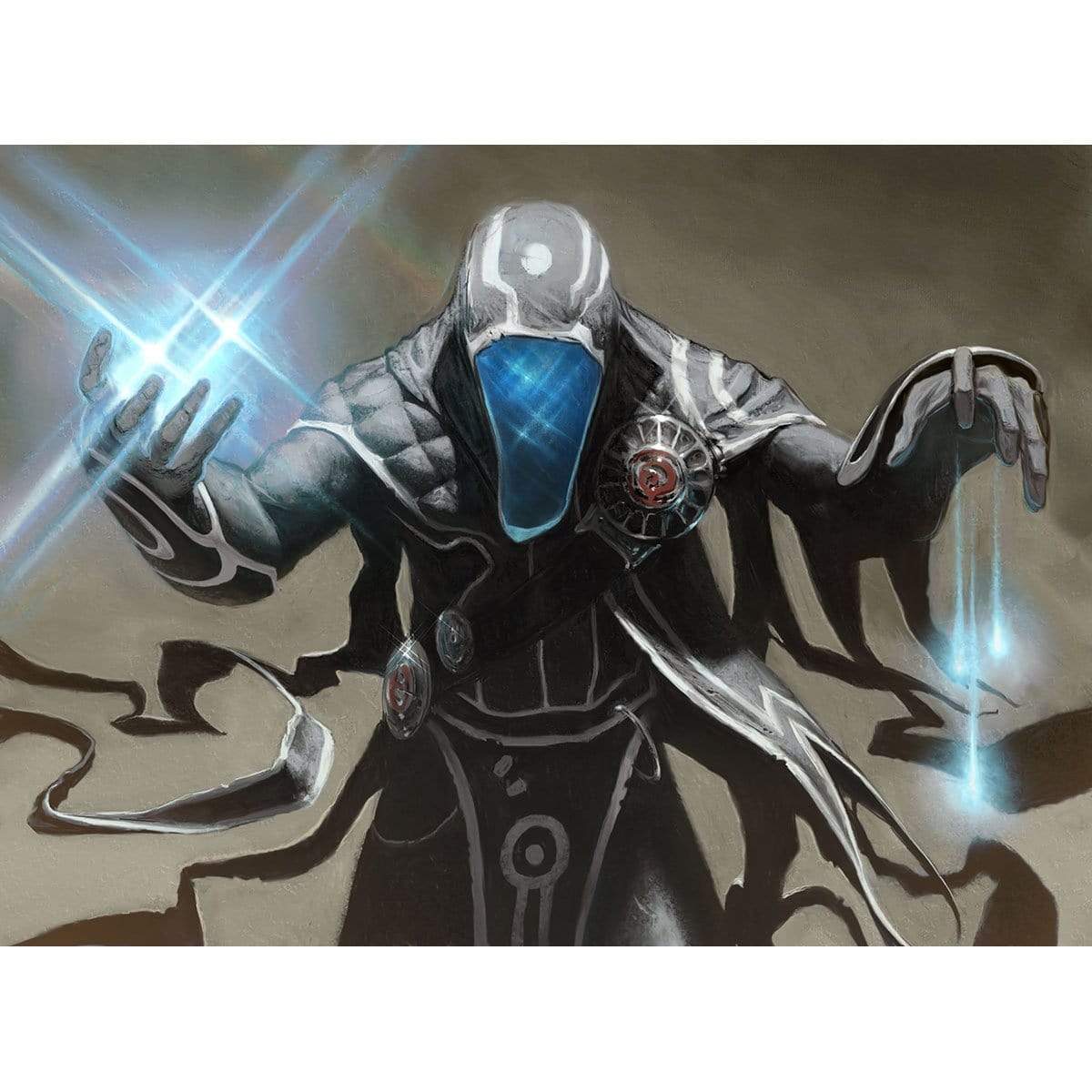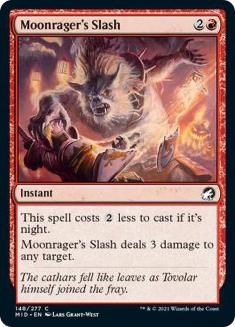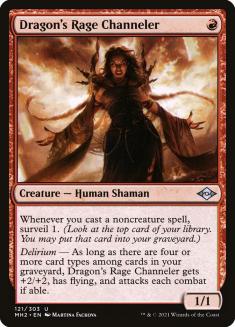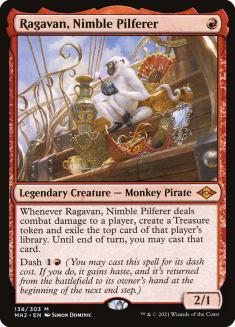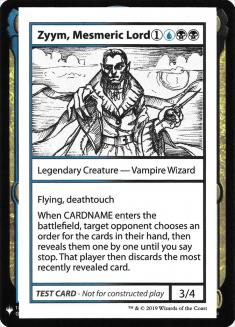Hello and welcome to this edition of Sullivan’s Satchel. As is customary during preview season, Cedric asked me to take a week off, as he is flooded with content from his stable of more competitive-oriented players. During such a fevered pitch of interest, there’s no room for an article such as this among a sea of offerings like “Here’s this five-mana spell I think is too good; please don’t check back on this claim in six weeks,” and so I’m put on the sidelines. No worries —that’s just more time for my inbox to fill up, and a timeout from an obligation that is as disassociation-inducing as this one has value in other respects.
I love the Innistrad: Midnight Hunt previews. It might be Magic’s best flavor work in terms of “familiar yet distinct,” and the tropes touch both the traditional high fantasy settings along with works of fiction outside the traditional Magic mold. I worked on this set from a distance, and in that spirit I’d like to offer up that flashback plays better as a sorcery for both players and that cards can be different from previous, ostensibly similar cards and still be fun and cool even if they eschew some common hooks.
With that, the questions. As always, you can DM me over on Twitter @BasicMountain or email [email protected]. Not only can you (probably) get your answer (Magic or otherwise) answered by yours truly, but the best question (determined by me) receives $25 in SCG credit as well.
Friend of the Satchel™ Ben Seitzman:
There’s definitely room for both, and they are so similar in terms of text boxes and incentives (play with a specific card type, but no need to go all in to make this work) that it’s hard to draw much distinction between the two. I guess I have a slight preference for Wizard’s Lightning since:
- It seems more evocative. Wizards helping you cast a Lightning Bolt makes a ton of sense. This is a bit more of an abstraction in my opinion. Not the worst, but not as clean as Wizard’s Lightning.
- As a principle I like “here’s some seemingly random but appealing stuff” more than “here’s something that speaks to the core mechanical experience.” A rebate that triggers off casting or not casting spells is much more on the nose than Wizards providing a discount.
- I’m not sure this is the most fun or stimulating two-player subgame to manage, and daybound/nightbound has some opposing agency.
Again, both good designs, no issues with either. Still, if I had to choose between the two it would be Wizard’s Lightning
And also from Ben:
Very much so as a child, and the ideal held appeal into my teenage years. I loved Bret Hart and Shawn Michaels — very generic but badass faces that seem like superheroes to ten-year-olds. Shawn was especially cool because he didn’t have some power lifter physique, and I was a pretty scrawny kid. My preferred finisher wrestling with my brother and friends was the Boston Crab and variations thereof.
Being a heel announcer remains a low-level dream job that I’m sub-1% to ever even get a chance to do but still holds an intense appeal.
From Josh Firkser:
I have not. Channeler and Ragavan seem so dissonant with what makes Burn good in Modern. The cards aren’t “good” in relationship to other things you could play; the power comes from how hard it is to interact with the sum of your cards. Playing creatures without haste and/or where most of the value comes from connecting opens up way more windows for removal to trade cleanly, or for blockers to blunt your entire offense. I know it’s hard for Ragavan’s hit trigger to be “bad,” but a deck as homogenous as Burn is way more likely to find random spells to be less useful than a deck like Jund or Izzet.
Of the two cards, Ragavan is definitely the more appealing of the two to try. I often fiddle with a ninth one-drop and I’d guess Ragavan is considerably better and more “on theme” than historic options like Grim Lavamancer, Bomat Courier, Figure of Destiny, and the like. But the Burn decks you’re describing feel like worse versions of either Burn or grindier DRC/Ragavan decks. I don’t know the appeal of playing that way instead of options at the polar ends.
From Markus Leben:
This one is pretty dope I think. It’s pretty laborious to resolve in certain spots, and it’s way greater than zero burden “foisted” onto the opponent, but in terms of the “Fact or Fiction 100% of the burden is on the opponent” sort of a thing, this is quite different. The biggest thing to me about Fact or Fiction and similar designs I critique is that the casting player gets to make the final decision with complete information, after the opposing player has to work their way through a maze of incomplete information, estimations about what the casting player is going to care about the most, and so on. That’s so much different from this, where the casting player doesn’t know if the second card revealed is the weakest card in hand or the strongest.
The opposing player having a lot of agency to try to cover their best card, the level of information they’re comfortable with revealing (maybe sometimes showing your “best” card first is the thing to do if you really care about keeping your hand concealed, etc.) is a much more engaging and satisfying two-player game than Fact or Fiction, in which the opposing player can only triage as best as possible, in most spots.
From Benjamin Ng:
Set aside the ambiguity about how one goes about establishing values and let’s get into the root of this — the extent to which expensive cards create a perceived or real barrier to entry to the format, or otherwise make the game not enjoyable for players showing up with significantly less expensive cards.
I’m not sure how much that speaks to the Commander experience in practice. Is the issue the literal price point, or is it the manner in which certain expensive cards can make games ruinous or otherwise unfun for people without substantial collections? As an example, is the difference between someone using Steam Vents or Volcanic Island ruining the experience of another player showing up with a preconstructed deck? I doubt it, on its own — maybe that player has a sense of the value of Volcanic Island and that can feel intimidating or annoying, but as a game piece I doubt the dual land matters very much either way. How about The Abyss? Now we’re talking about something both expensive and potentially miserable for that newer player, and the combination of the two can make the game seem very unappealing.
There’s a loose relationship between price and cards that should be avoided around players with smaller collections, but it isn’t one-for-one, and I think there are more precise tools to manage the experience you’re talking about. If you imagine three ways to describe expensive cards — “cool, splashy, aspirational” (Timetwister), “innocent” (Bayou), and “heinous” (pretty much any card from Legends), and avoid stuff from the third camp, I think that does most of the positive work of getting people to adhere to budgets without the unnecessary splash damage.
Lastly, the Question of the Week™ and returning champion for $25 in SCG Credit, from Peter Leja:
2. Was there a teachable moment you felt helped you grow the most as a game designer?
3. Do you take anything from broadcasting with you when you do game design?
To #1, absorb as many different genres as possible, try to engage with games both casually and competitively, do work (like streaming, writing, making videos, etc.) that lets you engage with responses, and have some skill that can get you into the door at a studio. Very few people get hired “cold” for game design work; getting a background in QA, programming, product management, or anything else useful and “traditional” is a huge deal in getting an eventual chance at design work.
To #2, biggest one for me was demoing the World of Warcraft TCG fairly early in my career at GenCon. Instead of lands, in WoW you could play any card in your hand as a land face down each turn. There was a card type called “Quests,” which were lands you played face up, and had an activated power (usually spending mana to draw a card) which after you used them would turn the Quest face down.
Our demo decks had a card called Into the Maw of Madness, a Quest with “Sacrifice this: draw a card” — remember, using a quest is optional, like a Sunbaked Canyon or something.
- Player 1: Turn 1 play Maw, sac it, go.
- Player 2: [looks at hand with Maw as the only Quest] Maw face down, go.
Lesson here: give players options they actually want to exercise, not just options for the sake of giving them options.
To #3, many players, even cerebral ones, play games for the visceral thrill, and that comes through very clearly while watching a broadcast. A well-designed game should be looking to generate more of those moments, not shy away from them, even at the expense of some abstract “skill-testing” sort of a thing. Hard to get this right, lots of room for debate on the best executions, but the emotional experiences never become unimportant, even when players get very good and play for a feeling of legitimacy among other considerations.

